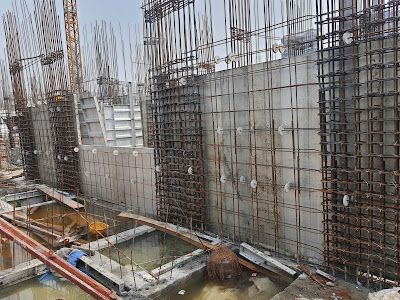A strong and sturdy formwork that is made of aluminum and is known for its smooth and even finish - Mivan Formwork, now widely accepted and used in the construction of all types of construction. As a result of its use for mass housing projects and construction, formwork is often used repetitively. Easily installed, adaptable, and modifiable in response to changes in structural and MEP designs.
The design and panels have specific names and positions pre-declared. The nomenclature for mivan form is
- Wall Panel
- Rocker
- Kicker
- Stud Pin
- Beam Side Panel
- Prop Head & Panel for Soffit Beam
- Deck Panel
- Deck Prop & Prop Length
- Soffit Length
Miscelliounous Components
- External Corner
- Internal Corner
- Internal Soffit Corner
- External Soffit Corner
- Pins
- Wedges
After placing the formwork around the reinforcement, we can now start the concrete pouring process, and thus we need to know the capacity and strength of the formwork. The formwork can carry up to 7-8 tonnes per square meter while its self-weight is around 17-18 kg per square meter.
The vertical panels can be removed after 12 hours of concrete pouring or when it reaches 10% of strength and horizontal deck panels after 36 hours of pouring or when it reaches 30-40% of desired strength. The panels are to be cleaned as soon as they are removed with brushes and scrubbers. The panels thus can be used around 200 times due to this durability and the easy modification process also creates a minimum slab cycle of 7 days.
At last, I would like to bring in the pros and cons of this Mivan Formwork.
Pros
- Faster slab cycle
- More efficiency
- Homogeneous concrete components are obtained with minimal joints
- A high-quality concrete finish is obtained
- Panels can be reused up to 200-250 times
- Unskilled laborers can work on this too
Cons
- The initial investment is more
- The more raw material is consumed
- No modification can be done as all members are RCC members
- More Steel is Consumed
- Panels are short width and require joints which create leaks and seepages





Comments
Post a Comment
Thank You for visiting, if you have any questions please feel free to ask: